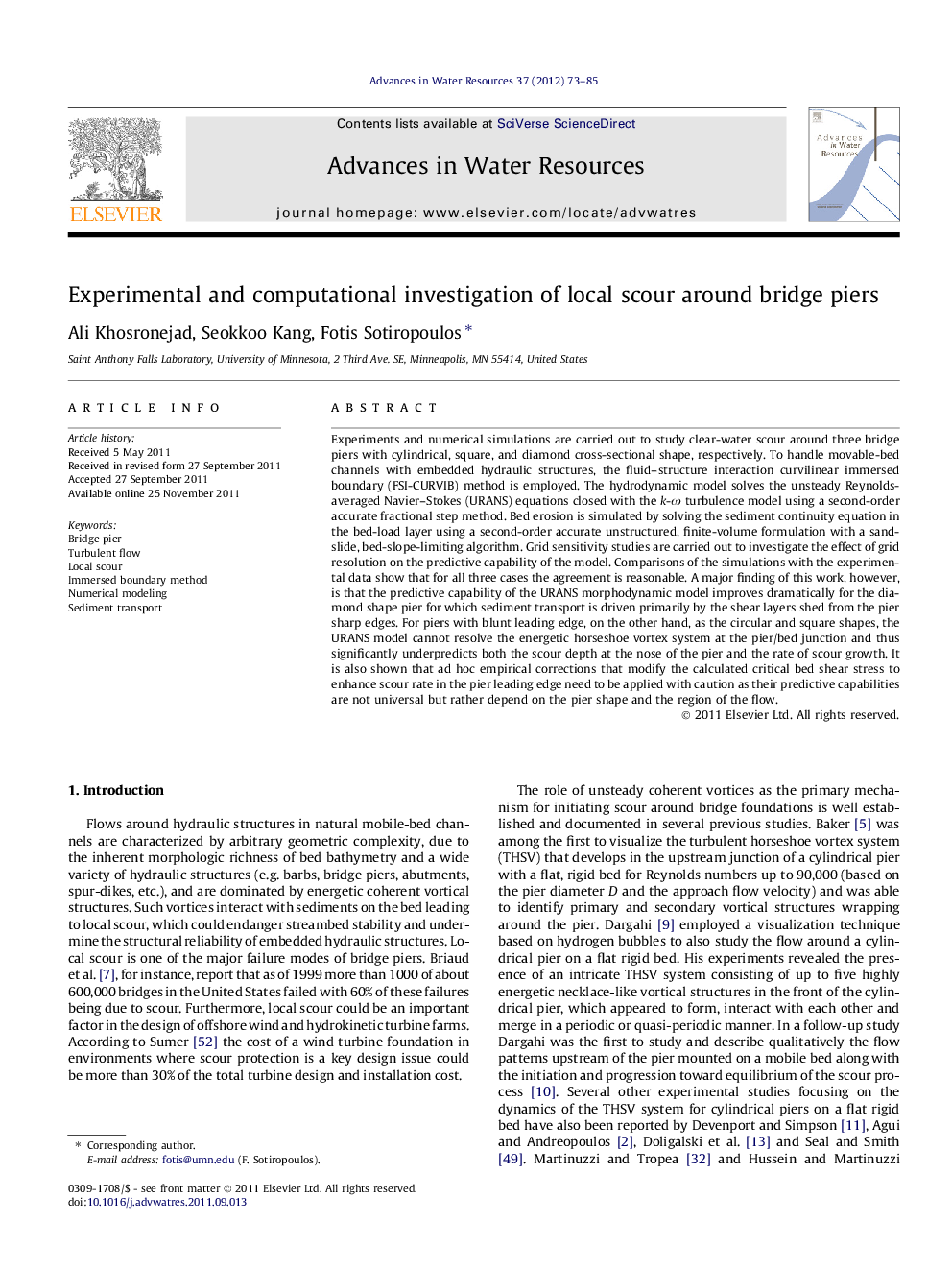| کد مقاله | کد نشریه | سال انتشار | مقاله انگلیسی | نسخه تمام متن |
|---|---|---|---|---|
| 4525980 | 1625671 | 2012 | 13 صفحه PDF | دانلود رایگان |

Experiments and numerical simulations are carried out to study clear-water scour around three bridge piers with cylindrical, square, and diamond cross-sectional shape, respectively. To handle movable-bed channels with embedded hydraulic structures, the fluid–structure interaction curvilinear immersed boundary (FSI-CURVIB) method is employed. The hydrodynamic model solves the unsteady Reynolds-averaged Navier–Stokes (URANS) equations closed with the k-ω turbulence model using a second-order accurate fractional step method. Bed erosion is simulated by solving the sediment continuity equation in the bed-load layer using a second-order accurate unstructured, finite-volume formulation with a sand-slide, bed-slope-limiting algorithm. Grid sensitivity studies are carried out to investigate the effect of grid resolution on the predictive capability of the model. Comparisons of the simulations with the experimental data show that for all three cases the agreement is reasonable. A major finding of this work, however, is that the predictive capability of the URANS morphodynamic model improves dramatically for the diamond shape pier for which sediment transport is driven primarily by the shear layers shed from the pier sharp edges. For piers with blunt leading edge, on the other hand, as the circular and square shapes, the URANS model cannot resolve the energetic horseshoe vortex system at the pier/bed junction and thus significantly underpredicts both the scour depth at the nose of the pier and the rate of scour growth. It is also shown that ad hoc empirical corrections that modify the calculated critical bed shear stress to enhance scour rate in the pier leading edge need to be applied with caution as their predictive capabilities are not universal but rather depend on the pier shape and the region of the flow.
► Integrated laboratory flume experiments and numerical simulations.
► Investigate the capability of URANS models in prediction of local scour around different bridge piers.
► Extensive grid refinement studies.
► The results underscore the effect of pier leading-edge bluntness on scour-inducing mechanisms.
Journal: Advances in Water Resources - Volume 37, March 2012, Pages 73–85